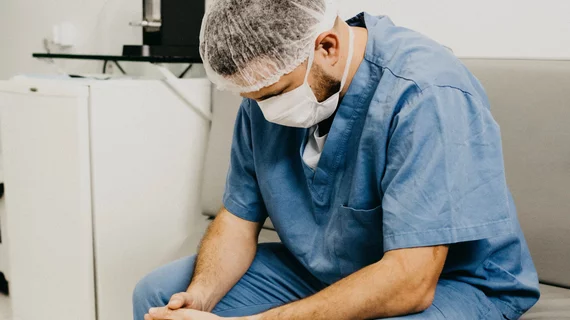COVID a cunning foe even for determined, well-prepared hospitals
It’s a painful paradox that hospitals can help COVID patients recover while helping the virus spread—and not only to non-COVID patients but also to healthcare workers, support staff and even visitors.
The Wall Street Journal has published an article looking at several hospitals learning some hard lessons from the experience.
One is the 500-bed University of Illinois Hospital in Chicago, which has been taking all precautions since isolating and admitting its first COVID patient in early March.
“Those plans were no match for the virus,” reporters Russell Gold and Melanie Evans write. “Within a month and a half, three staff members—two nurses and an operating-room technician—died from COVID-19.”
And that was only the beginning. By the middle of June, upwards of 260 hospital workers had tested COVID-positive and a fourth staffer died soon after.
Of course, most of those individuals aren’t sure where they picked up the illness. But the hospital’s head of infection control, Susan Bleasdale, MD, tells the WSJ it’s likely the virus has indeed spread inside its walls.
That’s almost beyond dispute. The article cites CDC figures showing more than 5,100 COVID cases evidently transmitted in hospitals between May 14 and June 21. Since case reporting is voluntary, those figures probably underestimate the scope of the problem.
Meanwhile, as Gold and Evans report, some hospitals have done about all they can to block hospital-acquired COVID while others admit it makes little sense to dedicate scarce resources to activities of dubious effectiveness.
Contact tracing, for one, “is pretty difficult because there are so many people with COVID,” says Michele Saysana, MD, chief quality and safety officer of Indiana University Health in Indianapolis.
There resources are getting directed to testing, as around 460 of 35,000 employees have proven positive.
“Pinning down hospital-acquired infections is difficult because of the time the virus can incubate before symptoms appear,” the reporters point out. “To be certain an infection occurred in a hospital, the federal government asks hospitals to report only infections appearing in patients who had been hospitalized for two weeks or more.”
Commenting on this standard for establishing hospital acquisition of COVID, Ashish Jha, MD, MPH, director of the Harvard Global Health Institute, says: “[Y]ou’re going to miss a vast majority of hospital-acquired infections.”
Such is daily life for hospitals fighting COVID while, to some unavoidable degree, giving it a hospitable base of operations.
To read the full article (posted behind the WSJ’s paywall), click here.

